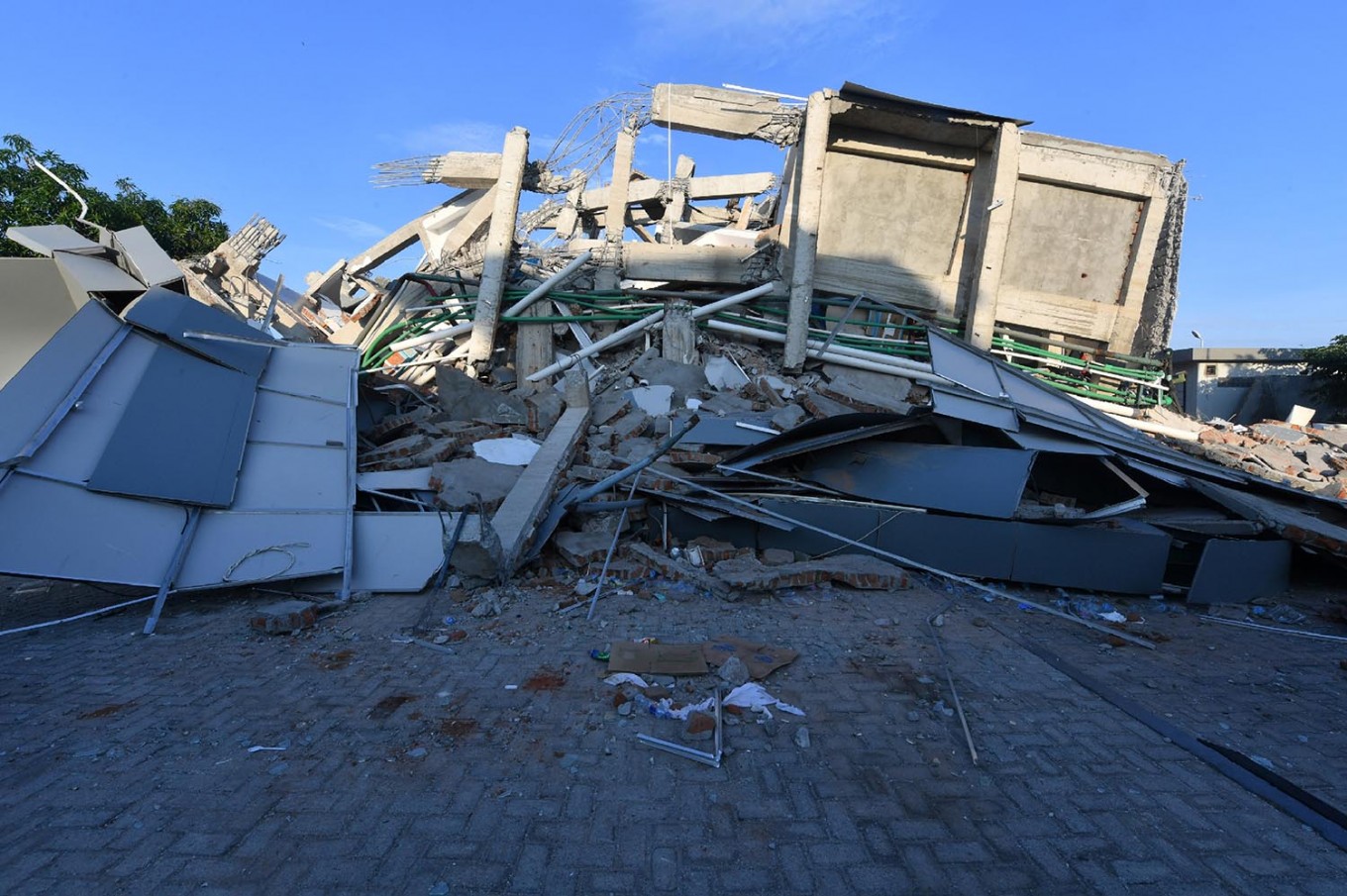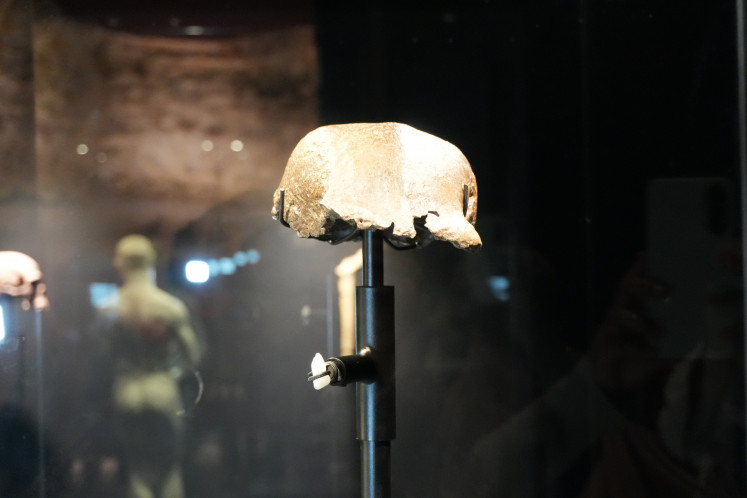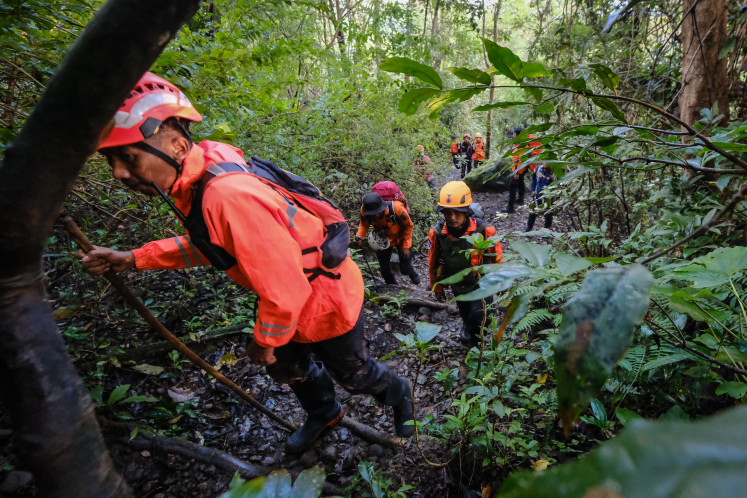Popular Reads
Top Results
Can't find what you're looking for?
View all search resultsPopular Reads
Top Results
Can't find what you're looking for?
View all search resultsIndonesia tsunami worsened by shape of Palu bay: Scientists
The tsunami that ravaged Palu was outsized compared to the earthquake that spawned it, but other factors -- including a long, narrow bay -- conspired to create monster waves.
Change text size
Gift Premium Articles
to Anyone
 This picture shows Roa Roa hotel after it was hit by an earthquake in Palu, Indonesia's Central Sulawesi on October 1, 2018, after an earthquake and tsunami hit the area on September 28. The death toll from the Indonesian quake-tsunami nearly doubled to 832 but was expected to rise further after a disaster that has left the island of Sulawesi reeling. AFP/ Adek Berry (AFP/Adek Berry)
This picture shows Roa Roa hotel after it was hit by an earthquake in Palu, Indonesia's Central Sulawesi on October 1, 2018, after an earthquake and tsunami hit the area on September 28. The death toll from the Indonesian quake-tsunami nearly doubled to 832 but was expected to rise further after a disaster that has left the island of Sulawesi reeling. AFP/ Adek Berry (AFP/Adek Berry)
T
he tsunami that ravaged the Indonesian city of Palu was outsized compared to the earthquake that spawned it, but other factors -- including a long, narrow bay -- conspired to create monster waves, scientists say.
At least 844 people are already known to have died in the disaster, and officials say that toll is likely to rise -- perhaps into the thousands.
The 7.5-magnitude quake, which struck early evening on Friday -- a time when many in the Muslim-majority country would have been at the mosque -- brought buildings down all over Palu and its surrounding area.
But it was an unlikely confluence of geophysical conditions that gave rise to a localized tsunami that washed away many other structures and certainly added to the human cost.
"The waves were at least two-to-three meters high, and possibly twice that," said Jane Cunneen, a research fellow at Curtin University's Faculty of Science and Engineering in Bentley, Western Australia, and an architect of the Indian Ocean's tsunami warning system, developed under UN guidance.
Judging by the earthquake, however, the tsunami shouldn't have been nearly that big.
"In the overwhelming majority of cases, tsunamis are generated by so-called thrust earthquakes, which create a large vertical displacement of the seafloor," said Baptiste Gombert, an expert on tectonics at Oxford University's department of earth sciences.
The Palu tsunami, by contrast, was generated by a strike-slip fault, where chunks of Earth's crust move over or under each other along a horizontal plane.
"Strike-slip faults are less likely to generate tsunamis, as they don't uplift the seafloor too much," said Cunneen.
So what caused the deadly waves? At least three factors, experts told AFP.
Read also: How you can help Palu earthquake victims
- Submarine landslide -
One is the singularly long channel of ocean water dead-ending at the low-lying city of Palu.
"The shape of the bay definitely played a major role in amplifying the size of the waves," said Anne Socquet, an earthquake expert at the Institute of Earth Sciences in Grenoble who has studied the region's seismic faults.
"The bay acted like a funnel into which the tsunami waves entered."
As the bay narrowed and became more shallow, the water was pushed up from below and squeezed from the sides at the same time.
A second ingredient was the size and location of the quake.
Magnitude 7.5 is a powerful earthquake -- only a few are recorded every year.
The one that struck Palu "was also really shallow, which means greater seafloor displacement," said Gombert.
To make things worse, the rupture was close to shore, leaving scant time or distance for the waves to dissipate.
Finally, circumstantial evidence suggests that the tsunami was magnified by the underwater equivalent of a landslide.
"The earthquake may have caused a submarine landslide near the mouth of the bay, or even within the bay itself," said Cunneen, noting the waterway's steep earthen walls.
This would help explain why the waves were so big near Palu, but much smaller in the surrounding area.
"Such events are very hard to predict with our current tsunami warning systems, which rely on quick estimates of earthquake magnitude and location," Cunneen added.










